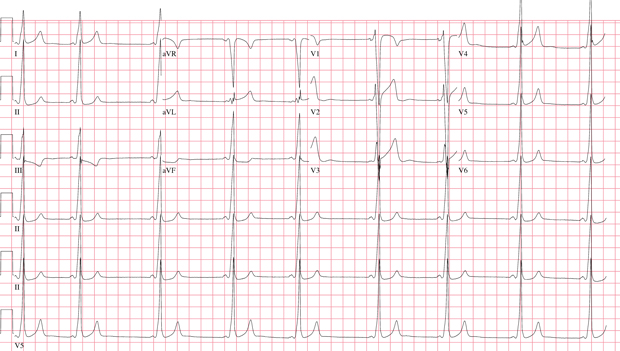The truth about Popeye and other iron tidbits
Green leafy vegetables, tofu, and lentils are all good sources of iron, but iron is most effectively absorbed when it is heme-based, as in red meat.
Marc J. Kahn, MD, MBA, FACP, offered several surprising facts during his Internal Medicine Meeting 2017 session, “Iron: Too Much, Too Little, Too Late.”
First, the Popeye paradox—it turns out the sailor man's whole way of life is based on bad data. “In 1870, Dr. von Wolf published a work in Germany, claiming that spinach had 10 times the iron content of other vegetables. … He misplaced the decimal point,” said Dr. Kahn, a hematologist and professor of medicine at Tulane University in New Orleans. “In 1937, the corrected iron content was published, but Popeye never corrected himself, so he always ate spinach because of the iron.”

Spinach actually has an iron content similar to that of other green leafy vegetables, as well as tofu and lentils. They are all good sources of non-heme-based iron. However, iron is most effectively absorbed when it is heme-based, as in red meat, Dr. Kahn noted.
Recent research has revealed counterintuitive news about iron supplementation dosing as well. “We were taught 325 mg oral iron three times a day,” Dr. Kahn said. However, iron absorption is regulated by the protein hepcidin. When hepcidin is high, iron is not absorbed; when hepcidin is low, it is absorbed.
“If somebody takes iron, what do you think happens to hepcidin levels? They go up,” he said. “It turns out that if we give 325 mg of iron three times a day, and the patient takes it that way, which most of them don't, but if they do, guess what happens? They don't absorb it!”
A study, published in Blood on Oct. 22, 2015, confirmed this biologically plausible concept. “That study suggested that providing lower doses and spacing to every other day actually improves absorption. Maybe 325 mg of iron sulfate every other day is the best schedule and maybe our patients who have been noncompliant and doing it that way actually are responding better,” Dr. Kahn said.
He offered a few additional tips on prescribing iron. “We can enhance iron absorption if we encourage patients to take their iron with vitamin C. We also like them to take it on an empty stomach, because some foodstuffs can actually chelate with iron. Specifically, tea and whole grains and tetracycline and antacids can inhibit iron absorption.”
Oral iron sulfate is the least expensive way to take iron, and thus the first treatment to try. But what if you've tried that, and a patient's hemoglobin is still low? Dr. Kahn offered a few case studies to illustrate common challenges.
Suppose a patient comes in with a hemoglobin of 9.3 g/dL and is started on iron sulfate at the proper dose and schedule. “Three months later her hemoglobin is 8.5. She swears she's taking her iron, so what are the next steps?” said Dr. Kahn.
His solution is the oral iron challenge test. “You check a serum iron and then you give one iron sulfate tablet. You check the serum iron an hour later and it should go up by 100,” he said. In this case, the patient's iron level rose from 32 µg/dL to 355 µg/dL and she admitted that she had not been taking the iron pills due to nausea. “Iron malabsorption can occur at the level of the lips,” Dr. Kahn quipped.
He once saw another patient who had already received a colonoscopy and endoscopy to search for potential causes of his anemia. “It turns out he's a regular blood donor. Nobody asked the question,” said Dr. Kahn. “A good take-home point—not all blood loss is involuntary.”
Another case study provided a reminder of the importance of patience in treating iron deficiency. A patient had a hemoglobin of 10.8 g/dL and a ferritin of 7 ng/mL. After two months of treatment, her hemoglobin had gone up to 13.8 d/L but her ferritin level was the same.
“She is referred because her ferritin is nonresponsive to iron and she needs a bone marrow biopsy,” Dr. Kahn said. But, in fact, the patient was responding—it just takes time for ferritin to improve. “Iron stores lag,” he said. “Iron needs to be continued for six months after normalization of iron, and this allows for the repletion of stores.”
The need to replete iron stores factors into another tip—how to easily calculate an iron deficit. The traditional formula is complicated, but you can get to the same result by taking the weight in pounds and multiplying it by the desired change in hemoglobin in grams per deciliter, according to Dr. Kahn.
“The units cancel out. That simplifies that equation,” he said. “I like to add 600 mg of iron for women and 1,000 mg for men if the ferritin is really low, just to replace iron stores.”
This formula can be used to calculate the dose of parenteral iron, when it's required. “Parenteral iron is only indicated in patients who truly can't absorb oral iron,” said Dr. Kahn. Thus it's not for nonadherent patients but is for those with celiac disease or inflammatory bowel disease.
“Inflammatory bowel disease, because it's inflammatory, hepcidin levels are through the roof. Not only that, they lose iron, because they have bleeding tendencies,” he said. In addition, the gastrointestinal side effects of iron will make patients' bowel problems even worse.
There are five forms of parenteral iron, all of which are good options except for the oldest, iron dextran, according to Dr. Kahn. “Which one of these you use often depends on which one you can get someone's insurance company to pay for,” he said.
Dr. Kahn noted that parenteral iron is only FDA-approved for patients with renal disease. “So I need to disclose that this would be an off-label use for most patients, but we know that there are patients who can't absorb oral iron who become profoundly iron-deficient and therefore may need parenteral iron,” he said.
On the other end of the spectrum are the patients with too much iron. Hereditary hemochromatosis is a common cause. It is characterized by iron overload, bronzing of skin, endocrinopathies, and arthropathies and is caused by a mutation in the HFE gene.
“The cool thing about HFE is it was described, and then investigators spent years trying to figure out where HFE worked in the gut to regulate iron absorption, and it turns out HFE doesn't work in the gut, it works at the level of hepcidin,” said Dr. Kahn.
Patients with hereditary hemochromatosis have low hepcidin levels, causing them to absorb too much iron. “It's often missed until really it's too late. If you can identify people before they become iron overloaded—I have a bunch of these people in my practice—you can prevent complications. They just have to give blood,” said Dr. Kahn.
Diagnosis starts with the transferrin saturation. “If that's greater than 50% to 55%, then I'm worried, and then I send an HFE analysis,” he said. Between 60% and 90% of patients with hereditary hemochromatosis have the same genotype mutation (C282Y), but there are a few other possibilities. “If the HFE genetic analysis is normal, then I suspect a problem in perhaps one of the other molecules that are much less common,” he said.
Treatment is phlebotomy, which can be accomplished through blood donation, if your local blood bank will go along. “The FDA approved blood donation [by these patients] a long, long time ago,” said Dr. Kahn. “Where I live, I can't get the blood bank to take their blood.”
However, some patients with excess iron can't be bled, for example, many of those with hemosiderosis, which is secondary iron overload. “If somebody is anemic—let's say they have thalassemia—we can't bleed them. Or let's say we have a sickle-cell patient who also can get iron overloaded, especially since they tend to be over-transfused. For those patients we need to do chelation therapy,” said Dr. Kahn.
Chelation therapy used to be parenteral, but there are now two oral medications, deferiprone and deferasirox, that are good options. “Even though the iron overload is secondary in these patients, the complications are the same as with hereditary hemochromatosis, and they can die of liver failure and heart failure, just like the hereditary variant,” said Dr. Kahn.
Once in a while, though, there's a simpler solution to a patient's apparent excess iron. Dr. Kahn had a patient named Jesse referred to him for polycythemia, with a hemoglobin of 16.6 g/dL. That level “is out of the normal range for a woman. But Jesse was in fact, a healthy strapping young man, with a normal hemoglobin,” he said. “Remember the hemoglobin values are different between genders.”





